Last Updated on November 28, 2025
Introduction
Manual tasks and to-dos are not easy to track. Over 40% of workers spend a quarter of their work week on repetitive tasks.
While it could seem easy in the beginning, it’s not scalable. It’s easy to lose track of crucial information, and redundant tasks are bound to cause massive productivity losses.
That’s why you need to have a solution in place to, help you keep a log of tasks and projects you need to do. And two, to automate repetitive work so you can focus on what’s important.
Workflows involve a sequence of steps in an organized manner and executed in a specific way to achieve a goal or complete tasks. They are used to streamline and automate complex processes, ensuring that work is accurately and efficiently completed.
A workflow management software helps you do just that.
The solution automates and manages processes and provides a centralized platform to manage tasks and resources with complete visibility.
In this article, we’ll look at some of the best workflow management systems in the market and learn more about the solutions, how it works, their benefits, and more.
List of best workflow management software
Let’s take a glance at some of the best workflow management software:
A comparison of best workflow management software
| Competitors | G2 rating | Task Management | Kanban Board | Complex Workflows | Access Control and User Permissions | Project planning | Mass updates | Pricing | Free trial |
| 4.7/5 | Yes | Yes | No | Yes | Yes | Yes | Free and $8-$16 per month | Yes | |
| 4.3/5 | Yes | Yes | No | Yes | Yes | Yes | Free and $10.99-$24.99 | Yes | |
| 4.3/5 | Yes | No | Yes | Yes | Yes | Yes | Contact for more information | Yes | |
| 4.7/5 | Yes | Yes | No | Yes | Yes | Yes | Free and $5-$16 | Yes | |
| 4.4/5 | Yes | Yes | No | Yes | Yes | Yes | Free and $5-$10 per month | Yes | |
| 4.3/5 | Yes | No | Yes | Yes | Yes | Yes | $1475 – $2479 | Yes | |
| 5/5 | Yes | No | Yes | Yes | Yes | Yes | Contact for more information | Yes | |
| 4.6/5 | Yes | No | Yes | Yes | Yes | Yes | $24 per user per month | Yes | |
| 4.2/5 | Yes | Yes | No | Yes | Yes | Yes | Unlimited users and $9.80-$24.80 | Yes | |
| 4.7/5 | Yes | Yes | No | Yes | Yes | Yes | Free and $5-$19 | Yes |
Best workflow management software
1. monday.com
The award-winning work and project management platform, monday.com, helps teams of all sizes to plan, prioritize, manage, and execute work effectively.
It allows every type of user to quickly get started with its ready-made templates which help get started with task tracking and completion immediately.
It is also a no-code/low-code platform, meaning it is easy to implement.
The visual and intuitive interface creates a collaborative environment where team members can assign tasks, create project plans, set dependencies and due dates, communicate, and share files in real-time.
monday.com also offers a variety of productivity features that simplify workflows, improve cross-team collaboration, and optimize time and resource management.
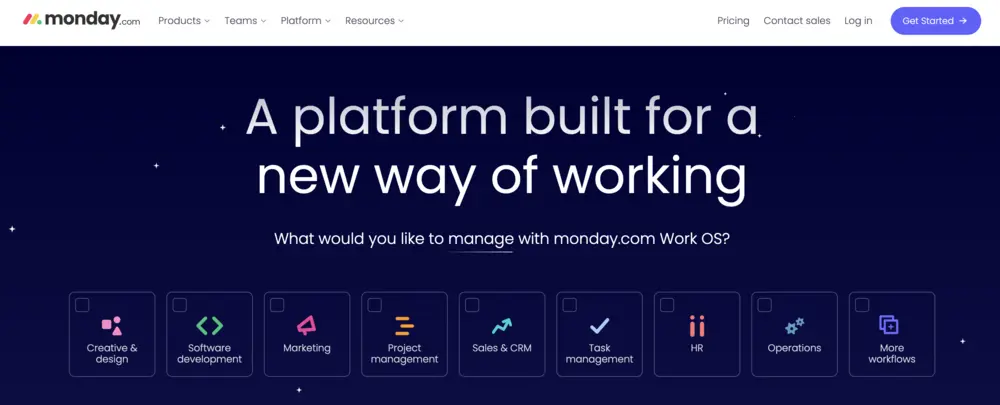
Best for
Monday.com is a perfect solution for managing everything from simple to complex projects or workflows and is equally suitable for in-house teams and remote workers.
Why should one choose Mmonday.com?
- Versatility: It has a wide range of use cases.
- Customization: The platform is no-code/low-code, fully customizable, and has 200+ ready-made templates.
- Collaboration: The visual and intuitive interface creates a collaborative environment where team members can assign tasks, create project plans, set dependencies and due dates, communicate in real-time, and share files.
- Productivity: monday.com offers a variety of productivity features designed to simplify workflows, improve cross-team collaboration, and optimize time-and resource management.
- Award-winning: It has won several awards and is trusted by over 100,000 teams.
Features
- Task creation and assignment
- Task lists
- Dependency management
- Project planning
- Kanban board
- Checklists
Pros
- Helps become more efficient and organized
- Helps improve productivity
- File attaching to every task
- Helps manage complex workflows
Cons
- One G2 reviewer states that the system can be slow at times
- Another reviewer states that the subitems have limitations
Pricing
Monday.com offers a free trial and a free-forever plan. Its paid plans start from $8 for 4 seats per month and go up to $16 for 3 seats per month. It also offers a custom-priced plan for enterprise users.
Rating
monday.com is rated 4.7/5 on G2 based on 7,970 user reviews.
2. Asana
Asana is a project management software that enables multiple teams or departments to share context, assign task ownership, combine related work, send files, receive instant updates on tasks and projects, and build effective cross-functional workflows.
With Asana, tracking the status of initiatives is easy and provides an accurate view of progress toward goals. You can report project progress in minutes using real-time work reporting, which creates visibility for teams and stakeholders.
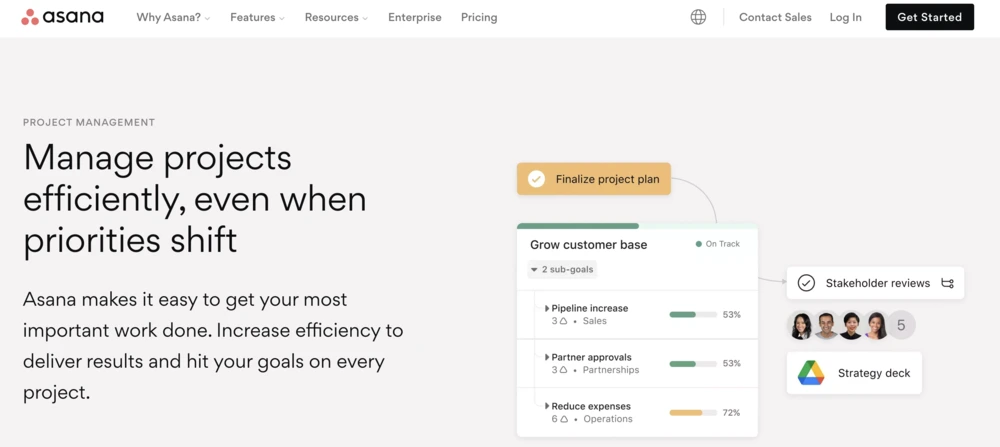
Best for
Asana is a perfect solution for individual users, small to medium-sized companies, and larger enterprises.
Why should one choose Asana?
Asana is a powerful project management tool that offers numerous benefits for individuals and teams.
Here are some reasons why one should choose Asana:
- Task and project management: Asana allows users to create tasks and projects, assign them to team members, set due dates, and track progress in real-time.
- Collaboration: Asana makes it easy for teams to collaborate on tasks and projects by providing a platform for communication, sharing files, and assigning tasks.
- Customization: Asana is highly customizable, allowing users to create custom fields, templates, and workflows that align with their specific needs.
- Integration: Asana integrates with a variety of other tools and services, such as Slack, Google Drive, and Microsoft Teams.
- Accessibility: Asana is available on multiple devices and platforms, including desktop and mobile devices.
Features
- Task management
- Workflow management
- Recurring tasks
- Mass updates
- Multiple views
- Dependencies
- Mobile app
Pros
- Creating subtasks for each task to stay on track
- The ability to multi-home projects
- Helps remove the reliance on spreadsheets
Cons
- One G2 reviewer states that Asana has a learning curve in the initial stages
- Another reviewer states that the free version has very limited capabilities
Pricing
Asana offers a free trial, and a free forever plan as well. Asana’s paid plans start from $10.99 per user per month and go up to $24.99 per user per month. They also offer a custom plan for companies that require more.
Rating
Asana is rated 4.3/5 on G2 based on 9,305 reviews.
Quick Read: 10 Best Project Management Software
3. Kissflow
Kissflow is a cloud-based workflow automation tool that enables organizations to streamline their business operations, and internal processes, and improve productivity.
It provides a no-code workflow management platform, which empowers even non-technical users to create and manage workflows, forms, and data. Kissflow supports various processes such as HR onboarding, purchase order management, vendor management, project management, and more.
Additionally, it offers advanced analytics and reporting features to help businesses track their progress and identify areas for improvement.
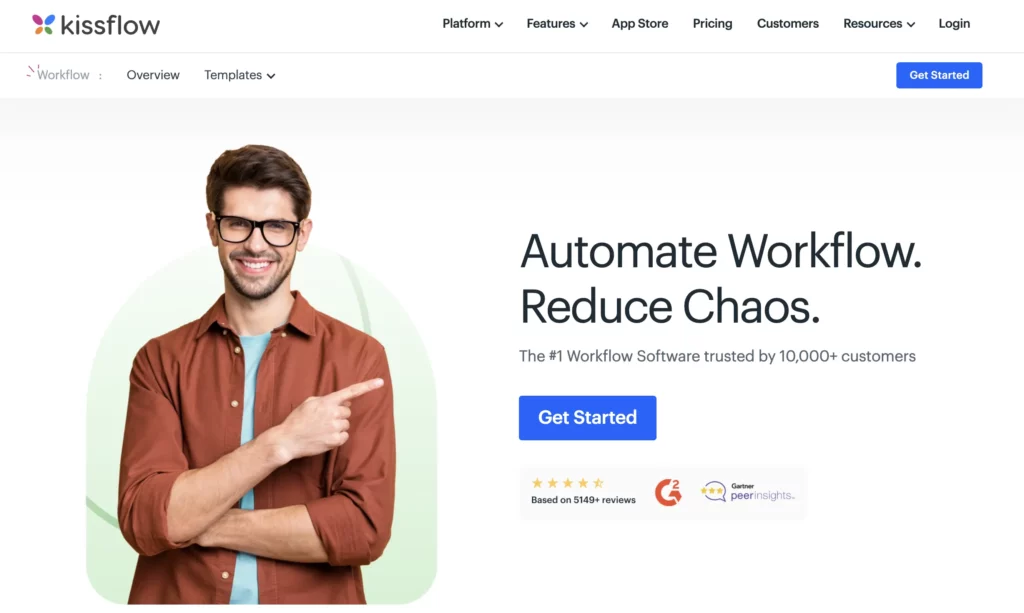
Best for
Kissflow is a perfect workflow solution for teams of all sizes, including startups to larger companies.
Why should one choose Kissflow?
From being a low-code to no-code platform to offering many other advantages, here are a few reasons why you should choose Kissflow’s workflow automation software:
- No-code platform: Even non-technical users can create and manage their workflows, forms, and data without needing to have any coding skills.
- Cloud-based solution: It is cloud-based, which means that users can access it from anywhere with an internet connection.
- Customizable and scalable: Kissflow is also highly customizable and scalable, allowing businesses to tailor the platform to meet their specific needs. This means that it can be used across different departments and industries, from HR to finance and beyond.
Features
- Document generation
- Business process management
- Workflow process
- Process design
- Low-code application development
- Comprehensive workflows
- Process routing
- Process overview
- Workflow builder
Pros
- The solution provides several workflow steps and processes to create unique workflows
- Great user-interface
- The solution is also highly customizable
Cons
- One G2 reviewer states that the integrations have an initial learning curve
- Another reviewer states that they would like to have more reporting, sandbox, metrics, and image enhancement features
Pricing
Kissflow has not made its pricing information available publicly. You can contact them to know more.
Rating
Kissflow is rated 4.3/5 on G2 based on 502 reviews.
4. Nifty
Nifty combines chat, tasks, goals, docs, and files into a single platform, allowing you to focus on your work without juggling multiple tools.
Nifty provides all the essential features of project management into one software, reducing project development cycles and improving team productivity. It achieves this by automating milestone-driven progress and ensuring that every stakeholder is aligned, keeping organizational goals on schedule.
You can manage tasks on Nifty through Kanban, list, and timeline views. Collaboration on Nifty is seamless since each project has an individual discussion thread, which encourages the creation of a dedicated knowledge hub for each project.
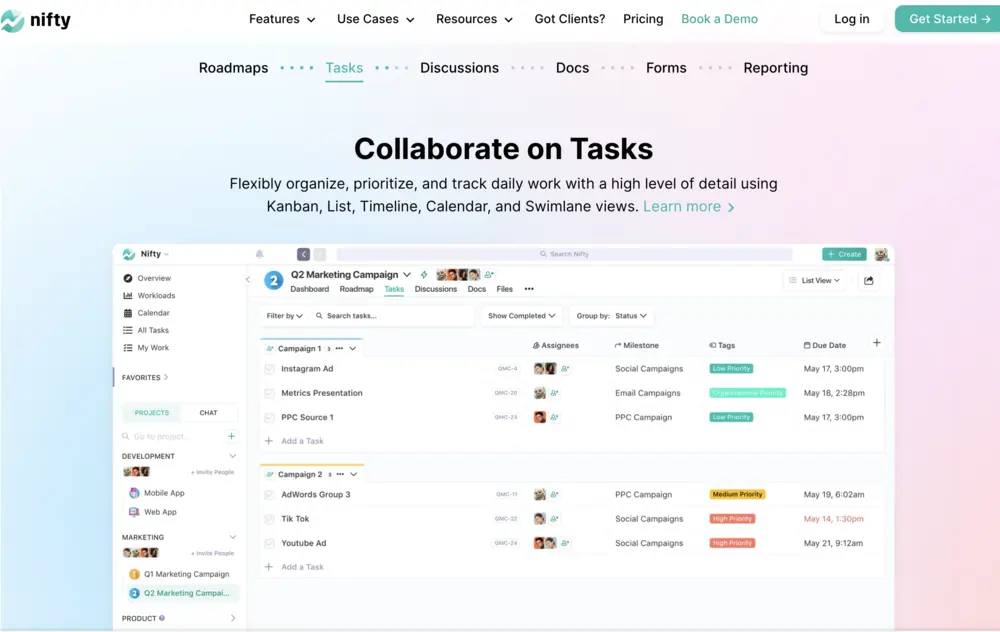
Best for
Nifty is a workflow management system that’s best for small to medium-sized businesses.
Why should one choose Nifty?
Here are some reasons why you should choose Nifty:
- All-in-one workspace: Nifty combines all the essential features of project management into a single platform, making it easier for users to manage their projects.
- Milestone-driven progress automation: Nifty automates milestone-driven progress, making it easier for teams to stay on track.
- Cross-departmental collaboration: Nifty is designed to encourage cross-departmental collaboration.
- Multiple task views: Nifty offers multiple task views.
- Integrations: Nifty integrates with a variety of other tools, including Google, Outlook, and file and document sharing.
Features
- Project mapping
- Tasks prioritization
- GANTT charts
- Recurring tasks setting
- Project dependencies
Pros
- Nifty’s user interface is simple and easy to understand
- High level of customization
- Nifty also has lots of personalization capabilities
Cons
- A G2 reviewer states that Nifty does not offer recurring reminders or due-date options
- Another reviewer states that Nifty is plagued with slow loading times
Pricing
Nifty offers a free forever plan. Their paid plans start from $5 per month and go up to $16 per month for business users.
Rating
Nifty is rated 4.7/5 on G2 based on 422 reviews.
Quick Read: 10 Best Business Management Software
5. Trello
Trello’s visual collaboration tool enables teams to create a shared perspective on any project in a flexible and rewarding way. Teams from various departments such as sales, marketing, HR, and operations can design and customize Trello to fit their unique needs and work styles. Additionally, Trello helps drive cross-team collaboration with over 100 integrations with key tools like Google Drive, Slack, and Jira.
Users can easily organize tasks by creating boards, lists, and cards. There’s no cumbersome onboarding process to get started, making it easy to get group participation. Once a user logs in and joins a team, they can see progress across all the team’s projects right away.

Best for
Trello is a perfect tool for companies of all sizes, small, medium, and large enterprises.
Why should one choose Trello?
Trello is a great tool for organizing tasks and projects because:
- It’s visual: Trello uses a board-based system where you can create lists and cards to visually represent your tasks and projects.
- It’s flexible: Trello can be used for a wide variety of tasks and projects, from personal to professional.
- It’s collaborative: Trello allows you to share boards and cards with others.
- It’s accessible: Trello is available on desktop and mobile devices.
- It’s affordable: Trello offers a free version with basic features as well as paid plans.
Features
- Due date settings
- Kanban board
- Task overview and dashboard
- Project mapping
- Drag and drop functionalities
Pros
- Helps keep users on top of their to-do lists
- Trello makes it easy for users to collaborate with their team members
- Visually appealing and easy-to-use interface
- Trello is a highly customizable solution
- The free version is highly functional
Cons
- A G2 reviewer states that Trello falls short when it comes to advanced features
- Another reviewer states that some of the paid extensions aren’t available in the free version
Pricing
Trello, like the other solutions on this list, offers a free plan that companies can use forever. Its paid plans start from $5 per month and go up to $10 per month for 100 users.
Rating
Trello is rated 4.4/5 on G2 based on 13,158 reviews.
6. ProcessMaker
Business users can rapidly design and deploy solutions to complex workflow problems with ProcessMaker’s low-code workflow automation platform. It empowers users to automate processes, reduce bottlenecks, and deliver true digital agility to their organization by easily connecting and extending third-party systems.
ProcessMaker’s workflow tool and BPM is unique as it emphasizes building a simple interface for business users through a robust, open-source workflow engine via API. Among its competitors, the platform’s flexibility, scalability, and ability to serve a wide range of needs for customers make it particularly unique.
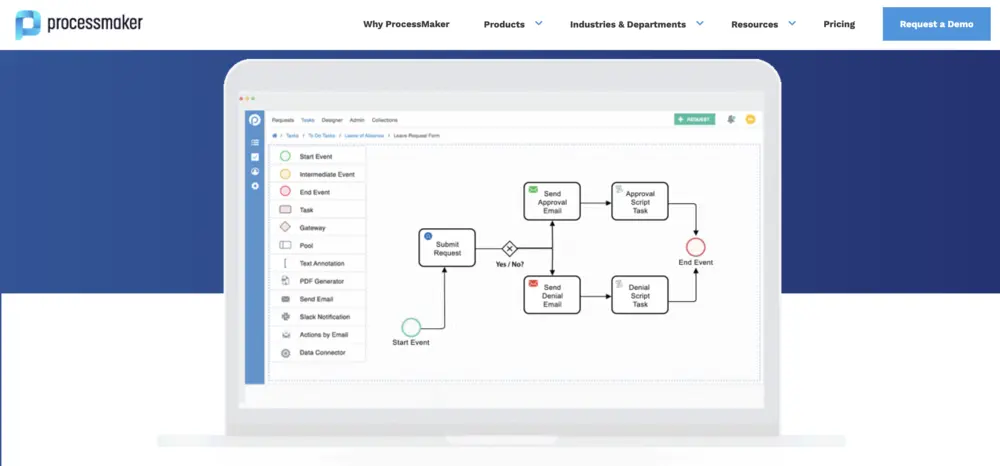
Best for
ProcessMaker is a perfect workflow solution for companies of all sizes.
Why should one choose ProcessMaker?
Here are a few reasons why you should go with ProcessMaker for your workflow management needs:
- The platform’s low-code approach enables business users to quickly and easily design and deploy solutions to complex workflow problems.
- ProcessMaker prioritizes ease of use, allowing users to focus on solving problems rather than navigating complex software.
- The platform’s robust workflow engine, powered by open-source architecture, offers unparalleled customization options.
- ProcessMaker’s ability to integrate with a wide range of third-party systems enables businesses to automate their processes and reduce bottlenecks.
- Additionally, the platform is highly flexible and scalable, making it an ideal choice for businesses of all sizes.
Features
- Document management
- No-code to low-code app development
- Process routing
- Access permissions
- Process designing
Pros
- Helps provide hints, catch incorrect dates, and more, simplifying a horde of processes
- Robust open-source foundation
- Great onboarding/customer support team
Cons
- A G2 reviewer states that the solution is not inexpensive
- Another reviewer states that managing users can be difficult
Pricing
ProcessMaker starts at $1,495 per month and goes up to $2,479 per month.
Rating
ProcessMaker is rated 4.3/5 on G2 based on 276 reviews.
Quick Read: 10 Best ERP Software
7. Quixy
Quixy empowers enterprise business users with no coding skills to automate workflows and processes, and build enterprise-grade applications using a simple drag-and-drop design, ten times faster compared to the traditional approach.
It is a cloud-based user-friendly business application platform that provides dozens of pre-built solutions for a variety of use cases such as CRM, project management, HRMS, T&E, service request, and incident management.

Best for
Quixy is a perfect workflow solution for small to medium-sized businesses.
Why should one choose Quixy?
Compared to other solutions in the market, Quixy is much more cost-effective, while being a user-friendly, efficient, and easy-to-use solution.
Quixy has also helped users publish over 20,000 applications with zero coding effort.
Features
- Lifecycle management
- Documentation
- No-code platform
- Application templates
- Workflows mapping
Pros
- User-friendly and intuitive
- Helps produce applications quickly and efficiently
- Users can build complex functions with minimal effort
Cons
- A G2 reviewer states that are few key features are missing from the solution
- Another reviewer states that the application lacks a few critical documents
Pricing
Quixy follows a quote-based pricing model. You can get in touch with them for more information.
Rating
Quixy is rated 5/5 on G2 based on 125 reviews.
8. Pipefy
Pipefy enables requesters, processors, and managers to become more efficient by making business processes, such as purchasing, job opening, accounts payable, and employee onboarding, hassle-free.
Pipefy achieves this through fast-to-deploy, no-code, automated workflows that enhance speed, increase visibility, and deliver higher-quality outcomes without the need for IT intervention.
Enterprises can drive digital transformation, gain control of soaring service request volumes, and leave manual processes behind to refocus on strategic initiatives and activities.

Best for
Pipefy is a perfect fit for small to medium-sized businesses. Larger companies can use it as well.
Why should one choose Pipefy?
Pipefy accelerates digital transformation by providing a low-code/no-code process orchestration platform that empowers anyone to automate workflows and manage business processes with ease, without requiring coding skills.
- Pipefy empowers citizen developers to create standardized forms independently to collect data and customize entire workflows.
- Pipefy accelerates digital transformation for businesses by letting non-technical users deploy digital workflows, facilitating collaboration across business units, and automating manual work.
- With Pipefy, businesses can easily create and deploy custom workflows to streamline their processes, regardless of their technical expertise.
- It also enables seamless collaboration between teams, departments, and stakeholders.
- Pipefy’s automation capabilities allow businesses to automate repetitive and manual tasks.
Features
- Real-time process monitoring
- Access control and permissions
- Process analysis
- Process repository
- Real-time notifications
Pros
- Helps organize experiment flows well
- The solution is easy to use, implement, and adapts to company needs
Cons
- A G2 reviewer states that the emails sent through Pipefy are sometimes marked as spam
- Another reviewer states that the application can get overloaded sometimes when you create multiple workflows
Pricing
Pipefy starts at $24 per user per month. You can get in touch with them to know more about their pricing.
Rating
Pipefy is rated 4.6/5 on G2 based on 207 reviews.
Quick Read: 10 Best Expense Management Software
9. Wrike
Wrike is one of the best software solutions designed for teams and organizations seeking to collaborate, create, and exceed their goals daily. Wrike unites everyone and all work into a single platform, eliminating complexity, increasing productivity, and freeing people to concentrate on their most meaningful work.
With its exceptional power, versatility, and user-friendliness, Wrike is the only work management solution that organizations will ever require to scale, optimize, and move swiftly in a competitive world. Over 20,000 customers leverage Wrike to power their future and collaborate.

Best for
Wrike is a perfect fit for small to medium-sized businesses.
Why should one choose Wrike?
Here are a few reasons why you should choose Wrike:
- Wrike is an excellent choice for organizations seeking a powerful work management platform that enables efficient collaboration and increases productivity.
- With Wrike, teams can easily manage their work and stay on top of their tasks, deadlines, and projects.
- Its unmatched power, versatility, and user-friendliness make it an ideal solution for organizations looking to scale, optimize, and move quickly in a competitive environment.
- Additionally, Wrike’s extensive list of satisfied customers, including many well-known brands, speaks to its effectiveness and reliability.
- Choosing Wrike means choosing a trusted and proven work management solution that can help organizations of any size achieve their goals and reach their full potential.
Features
- To-do lists
- Recurring tasks
- Drag and drop functionalities
- Project planning
- Multiple views
Pros
- Wrike provides complete visibility into multiple functions
- Dashboards can be built for personal or team use
- Wrike improves real-time collaboration and boosts productivity
Cons
- A G2 reviewer states that the solution requires some level of training to use it effectively
- Another reviewer states that the reporting functionality is hard to understand and use
Pricing
Wrike offers a free trial and a free forever plan. Its paid plans start from $9.80 and go up to $24.80 for up to 200 users.
Rating
Wrike is rated 4.2/5 on G2 based on 3,305 reviews.
10. ClickUp
Teams can manage their tasks, projects, and goals from a single platform with ClickUp, which is a cloud-based productivity and project management platform. ClickUp offers a wide range of features, including task management, project management, time tracking, collaboration tools, calendars, and integrations with other popular tools.
Teams can customize their workflows to their specific needs and preferences, thanks to ClickUp’s customizable design. ClickUp is suitable for various industries, such as software development, marketing, sales, design, and more. Teams searching for a modern, all-in-one platform to streamline their work processes, improve collaboration, and increase productivity have chosen ClickUp.

Best for
ClickUp is best for individuals and teams of all sizes.
Why should one choose ClickUp?
Here are a few reasons why one must choose ClickUp:
- ClickUp offers a wide range of features that can help teams manage their tasks, projects, and goals from a single platform.
- The solution is highly customizable, allowing teams to tailor their workflows to their specific needs and preferences.
- Additionally, ClickUp is suitable for various industries, making it a versatile tool that can meet the needs of many different types of teams.
Features
- Tasks management
- Project management
- KPIs and goal-setting
- Unified dashboard
- Sprint planning
- Due dates and dependencies
Pros
- ClickUp is easy to use and customizable
- Helps track projects in real-time
Cons
- A G2 reviewer states that the solution has a learning curve to it
- Another reviewer states that the solution can be slow at times
Pricing
ClickUp offers a free trial and a free forever plan. Its paid plans start from $5 and go up to $19 per user per month.
Rating
ClickUp is rated 4.7/5 on G2 based on 6,628 reviews.
Quick Read: 9 Best Vendor Payment Management Software
What is workflow management system?
A workflow management system is a solution that helps automate and manage business processes by defining, executing, and tracking workflows. Workflow management solutions provide a centralized platform for managing tasks, resources, and processes involved in a workflow, and allow real-time visibility into the status of tasks and projects.
It helps businesses streamline and optimize their operations, reduce manual work, and improve productivity by automating excruciatingly redundant tasks and eliminating process bottlenecks.
Types of workflow management system
Several types of workflow management systems are used to manage business processes and automate tasks within an organization.
Here are some of the common types:
- Sequential workflow: In this type of workflow, tasks are performed in a specific order, and each task depends on the completion of the previous task.
- Parallel workflow: In a parallel workflow, multiple tasks are performed simultaneously. It is commonly used in situations where several tasks are done concurrently without any dependency.
- State machine workflow: Here, the flow of tasks is based on the current state of the system or process. The tasks performed depend on the current state of the system and its associated conditions.
- Dynamic workflow: A dynamic workflow performs tasks based on a set of rules that get defined at runtime. This type of workflow is often used in situations where tasks change frequently and cannot be predefined.
- Hybrid workflow: This type of workflow combines elements of a sequential, parallel, state machine, and dynamic workflows to create a more complex and flexible workflow that can handle a variety of situations.
- Human workflow: Human interactions are required to complete tasks. It is commonly used in situations where a human judgment or input is needed to make decisions or perform certain tasks.
- Production workflow: In a production workflow, the focus is on the output of goods or services. It involves the creation, approval, and management of production-related tasks.
- Project workflow: Here, the focus is on the completion of a specific project. It involves the planning, execution, and monitoring of project-related tasks.
What does a workflow management system do?
From workflow designing and mapping to considerably boosting communication and collaboration, here are a few key areas a workflow management system tackles:
- Workflow design and mapping: WMS solutions allow users to design, map, and visualize workflows. It facilitates ways to define the sequence of tasks, assign roles and responsibilities, set deadlines, and specify conditions for task completion.
- Task assignment and tracking: It enables users to assign tasks to individuals or groups, monitor task progress, and receive notifications and alerts when tasks are completed or delayed.
- Collaboration and communication: A WMS provides a platform for team members to collaborate and communicate with each other. It includes features such as real-time messaging, file sharing, and commenting on tasks.
- Reporting and analytics: Workflow management systems generate reports and analytics on workflow performance, such as task completion rates, cycle times, and resource utilization.
- Integration with other systems: These solutions integrate with other business systems, such as CRM, ERP, and HR software, to streamline processes and eliminate manual data entry.
Best practices for workflow management
Here are some best practices for workflow management:
- Define clear goals and objectives. Clearly define the goals and objectives of the workflow to ensure that everyone involved understands what needs to be achieved.
- Map out the workflow. Map out the entire workflow and identify any potential bottlenecks or inefficiencies.
- Assign roles and responsibilities. Assign clear roles and responsibilities to each team member to ensure that everyone knows what they are responsible for and can work together effectively.
- Set deadlines. Set clear deadlines for each task and make sure that they are realistic. This will help to ensure that the workflow progresses smoothly and that the final deliverable is completed on time.
- Prioritize tasks. Prioritize tasks based on their importance and urgency to ensure that the most critical tasks are completed first.
- Communicate effectively. Effective communication is essential for successful workflow management. Ensure that team members are informed about changes to the workflow and that they are kept up-to-date on progress.
- Automate where possible. Automation can help streamline workflows and reduce errors. Look for opportunities to automate tasks where possible to improve efficiency and reduce the risk of human error.
- Monitor and evaluate. Monitor the workflow to ensure it progresses as planned and evaluate its performance regularly. This helps identify any issues or areas for improvement and make changes as necessary.
How does workflow management software help in IT?
Workflow management software can help IT teams, in several ways:
1. Process automation
Workflow management software can automate tasks such as software deployment, patch management, and backups, freeing up IT staff to focus on higher-value tasks.
2. Standardizing processes
Workflow management software can help standardize IT processes across the organization, ensuring that they are consistent and repeatable.
3. Streamlining communication
It provides a centralized platform for IT teams to collaborate, communicate, and share information. This can help to reduce errors, improve productivity, and ensure that everyone is working towards a common goal.
4. Tracking progress
IT teams can track the progress of tasks and projects in real-time. This helps identify bottlenecks, prioritize tasks, and ensure that projects are completed on time.
5. Improving compliance
Workflow management software helps IT teams comply with industry regulations, such as HIPAA or PCI-DSS, by ensuring that processes are documented and auditable.
6. Enhancing reporting and analytics
Workflow management software provides IT teams with reporting and analytics tools to monitor the performance of IT processes and identify areas for improvement.
How to choose the best workflow management software
Choosing the right workflow management software for your organization can be a complex task since you need to consider various factors.
Here are some factors that you should take when making your decision:
- Features: Look for a solution that offers the features you need to support your business processes, such as task management, collaboration tools, automation, reporting, and analytics.
- Ease of use: The workflow management software should be user-friendly and intuitive, allowing users to quickly adapt to the software’s interface and features with minimal training.
- Customization: Go with a solution that is flexible and can be customized to meet your specific needs. This includes creating custom workflows, templates, and forms.
- Integration: The workflow management software should be able to integrate with other business systems such as CRM, ERP, and HR software.
- Security: Ensure the workflow management software you choose has robust security features, such as user authentication, data encryption, and access controls.
- Scalability: Choose workflow management software that can scale up as your business grows.
- Support: Ensure the workflow management software vendor provides reliable support, including documentation, training, and technical support.
- Cost: Consider the cost of licensing, implementation, maintenance, and upgrades.
Conclusion
Workflow management systems are essential to streamline your operations and maximize productivity. The market offers several top-tier workflow management systems, including Trello, Asana, Kissflow, and monday.com, each with its unique strengths and weaknesses.
When you implement a solution, it’s critical to evaluate each one against your specific requirements and preferences. With the right workflow management system, you can optimize processes, enhance collaboration and communication, and achieve goals more efficiently.
FAQs
Managing software workflow involves organizing and coordinating the tasks, processes, and resources involved in developing software. It includes planning, tracking, and monitoring progress, as well as identifying and resolving issues that arise during the development process. The goal is to ensure that the software is developed efficiently, on time, and within budget while meeting the required quality standards.
Yes, Microsoft offers a workflow tool called Microsoft Power Automate (formerly known as Microsoft Flow) that allows users to automate tasks and workflows across various applications and services.
Workflow management software helps streamline and automate complex business processes, improving efficiency, productivity, and accuracy while reducing errors and delays. It also allows for better collaboration and communication among team members and provides real-time visibility into project progress, making it easier to identify and resolve issues.
Workflow application software is a type of software that helps automate and manage business processes by defining, executing, and tracking workflows. It allows businesses to streamline and optimize their operations, reduce manual work, and improve productivity.
There are many manufacturers of workflow management software, including major tech companies like Microsoft and IBM, as well as specialized vendors like Kissflow and Quixy.
Software workflow management is the organizing and coordinating of tasks, resources, and processes involved in developing software. It involves planning, tracking, and monitoring the progress of software development. The goal is to ensure that the software is developed efficiently, on time, and within budget while meeting the required quality standards.
The benefits of workflow software include improved efficiency, productivity, and accuracy in business processes, reduced errors and delays, better collaboration and communication among team members, and real-time visibility into project progress. It also helps to automate repetitive tasks, eliminate bottlenecks, and optimize workflows, resulting in significant time and cost savings for businesses.





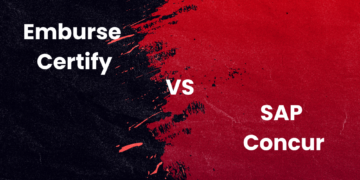



Discussion about this post